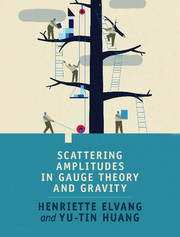References
Published online by Cambridge University Press: 05 January 2015
Information
- Type
- Chapter
- Information
- Scattering Amplitudes in Gauge Theory and Gravity , pp. 299 - 318Publisher: Cambridge University PressPrint publication year: 2015
- Creative Commons
- This content is Open Access and distributed under the terms of the Creative Commons Attribution licence CC-BY-NC 4.0 https://creativecommons.org/cclicenses/
